Let’s talk about pro player gaming gear and settings. Yes. The stuff people DM me about at 2 a.m. because their mouse feels “off” and they swear their FPS dropped after a Windows update. I’ve been in this mess for over a decade—tournaments, scrims, late-night ranked queues, the whole loop—and in my experience, the most dangerous thing you can do for your aim is copy a spreadsheet from your favorite streamer without thinking. You can steal ideas. But you still have to make them yours. I’ll break down mice, monitors, DPI, polling rate, aim assist, deadzone, crosshair, FOV, refresh rate, 240Hz vs 144Hz, audio tweaks, and all the boring-but-critical graphics settings like V-Sync and G-Sync. I’m going to keep it plain. If a fifth grader can’t read this, I’ve failed.
Why pro settings matter (and why they also don’t)
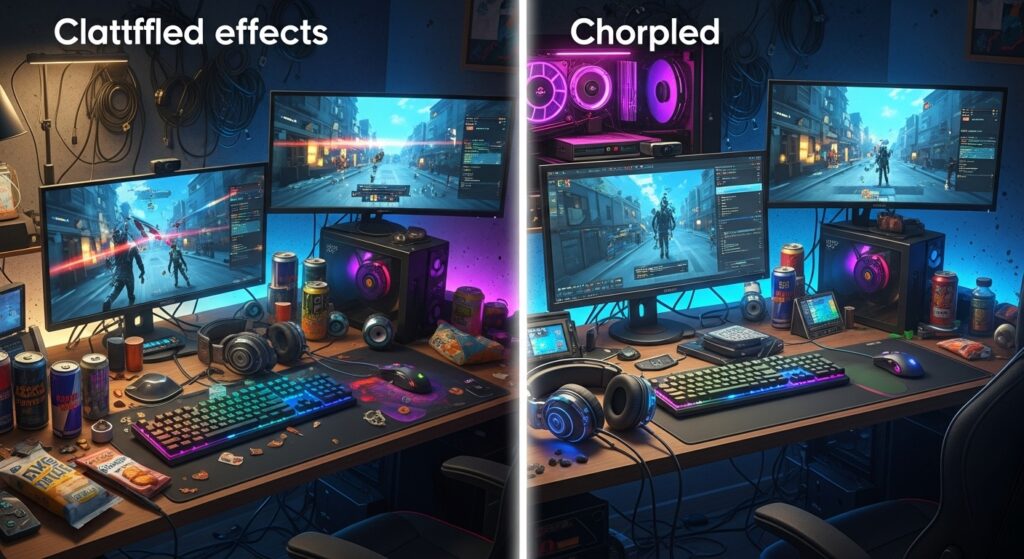
I’ve always found that gear is the easy part. Buy a decent mouse. A monitor that doesn’t gasp for air at 60Hz. Done. Settings are where people fall into rabbit holes. They turn six things on because some pro said so, but they don’t know why. Then they wonder why their crosshair feels like a shopping cart wheel stuck in the wobbly position.
Here’s my rule: anything that reduces input lag and noise is good. Anything that adds “effects” usually hurts your consistency. In FPS, consistent is king. In MOBAs, readable is king. In racing games, smooth is king. And yes, sometimes you need to pick which king you’re serving.
The mouse: your main weapon
Short version: a good sensor, a shape that fits your hand, and a DPI you can control. That’s it. Don’t overpay because the marketing tells you the mouse was “built with pros.” Pro gear is often picked because a sponsor paid for it. I’ve tested dozens of mice. Some lasted years. One cracked during a LAN because the table had a sharp edge. True story. I still placed top 8. Adrenaline is a weird glue.
What matters in a mouse
- Sensor: Modern sensors are all solid. If it tracks well and doesn’t spin out, you’re fine.
- DPI: I live around 800 DPI for most shooters. 400 is fine too. 1600 works for some. Your distance-to-target matters more than the number.
- Polling rate: 1000 Hz is standard now. Some go 2000 Hz or 4000 Hz. You’ll feel smoother, maybe. But also heat and battery drain. Do what your PC can handle.
- Weight: Lighter helps for FPS. Heavier can be okay for MOBA/MMO. I prefer 55–65 grams.
- Shape: If your hand cramps, the mouse is wrong. Don’t fight it.
If you want a base explainer on what a gaming mouse actually is, here’s a straight link to the term itself: gaming mouse. It won’t fix your aim, but it’ll ground the jargon.
Mousepad and surface
I like a large cloth pad. Speed pads are nice, but control pads save my wrist on long days. Keep it clean. Oil and dust make it weird. Yes, you should wash it sometimes. No, not with boiling water. Be gentle.
Windows mouse settings (do not skip)
- Pointer speed: 6/11 in Windows.
- Mouse acceleration: off. Always.
- Raw input: on in games that support it.
These three lines have saved more players than any “secret pro tip” ever could. If your aim suddenly feels like ice, check these first.
Keyboards: switches are a taste, not religion
I’m a simple person: TKL or 60% layout to free the mouse area. Linear mechanical switches because they’re smooth. Fast actuation is nice but overrated. Your fingers will learn anyway. Loud clicky switches are fun until you try to talk on Discord and your friends want to exile you.
I also keep my movement keys (WASD) with optional O-rings for less noise. Spacebar bounce is real if you’re a jump-spammer like me.
Monitors: where “refresh rate” changes your life
Get a high refresh rate panel. 144Hz minimum for FPS. 240Hz feels great if your GPU can feed it. 360Hz is a flex, and sometimes it’s totally worth it. If you don’t understand refresh rate, the short page on it is here: refresh rate explained.
- Resolution: 1080p is easiest for high FPS. 1440p if your GPU is strong and you want clarity. 4K for single-player joy, not sweaty ranked.
- Adaptive sync: G-Sync or FreeSync helps in single-player. In competitive play, I often lock FPS and turn it off to reduce latency.
- Overdrive: set it to a medium level. Too high = ghosting. Too low = blur.
Controllers: aim assist, deadzones, and honesty
I play both mouse/keyboard and controller. And I’m not shy about this: aim assist is strong in many games. It’s part of the input method. Use it, tune it, don’t argue about it on Twitter for six hours.
- Deadzones: Just above stick drift level. If drift starts at 0.05, try 0.07. Keep it minimal.
- Response curves: Linear or “dynamic” curves depending on the game. Try linear first.
- Sensitivity: Start low and build. Same idea as mouse.
- Triggers: Set to hair trigger if allowed. Instant shots matter.
Graphics settings: the boring stuff that wins fights
Here’s the part no one wants to read. But it matters. I’ve shaved 15 ms off input lag by killing fancy graphics. That’s a lot. That’s the difference between “I almost had him” and “clipped him mid-slide.”
- V-Sync: Off for competitive. Add a frame cap just below your refresh rate instead.
- G-Sync/FreeSync: Great for casual play. In ranked, I usually go off + frame cap.
- Shadows: Low but not off if enemies hide in shadow blobs. Depends on the engine.
- Anti-Aliasing: Low to Medium. TAA adds blur. FXAA is softer. Sometimes SMAA is the sweet spot.
- Textures: Medium or High if VRAM allows. Doesn’t hit FPS too hard in many engines.
- Effects/Volumetrics/Motion blur/Film grain: Off. All of it. Kill the fluff.
- FOV: High enough to see more, but not so high you shrink targets. I sit around 100–110 in shooters that allow it.
Audio: you can’t shoot what you can’t hear
Headset over speakers for competitive. Close-back for less noise. Open-back is comfy but leaks sound both ways. If you’re in a quiet room, open-back can be nice.
- Dynamic range: set to “low” or “night mode” in a lot of games. Makes footsteps louder.
- Surround: often off. Many engines fake it and mess up positioning.
- HRTF: try it if the game supports it. For some ears it’s magic, for others it’s chaos.
- Mic: gate and noise suppression on. Push-to-talk if you have a loud keyboard.
I’ve played matches where the other team’s keyboard sounded like they were making popcorn. Not ideal.
My take on copying pro setups
Look, I love the data. I read every spreadsheet. I test weird DPI combos at 3 a.m. But don’t marry numbers. Test them. Keep what works. Toss the rest.
When people ask me about the best pro player gaming gear and settings, I tell them this: find stable settings first. Then grind. Most “pro” settings exist because the players already put in the hours. Settings don’t carry you. They just don’t get in the way.
PC and OS tweaks that actually help
- GPU drivers: update, but don’t chase day-one hotfixes unless they help your game.
- NVIDIA Control Panel: Low Latency Mode “On” or “Ultra” for some titles. Max pre-rendered frames to 1 if you feel delay.
- Windows Game Mode: on. Xbox Game Bar: off. Yes, it’s weird.
- Background apps: close Discord overlays, Chrome tabs from 2017, RGB software that behaves like malware.
- Power plan: High Performance for desktops. Laptops? Keep thermals in check.
Crosshair and HUD: simple wins
I like a static crosshair. Medium size. A color that pops against maps—cyan, lime, or white with dark outline. No dynamic spread change if it distracts you. Keep the HUD clean. I remove 60% of the clutter if I can. The more your eyes hunt, the slower your brain reacts.
Color settings and visibility
People go wild here. Some crank Digital Vibrance like they’re making a cartoon. I say push color just enough to spot targets against the map. Aim clarity, not eye strain.
- NVIDIA Digital Vibrance: 60–70% is my usual.
- Monitor saturation: small bump if needed.
- Brightness: enough to see dark corners without washing out everything.
Warm-up and routines
I warm up the same way most days. Ten minutes of flicks. Ten minutes of tracking. A few rounds of strafing drills. Then jump into ranked or scrims. If I feel slow, I lower sensitivity by 5% for a set. If I feel jittery, I raise it back. Little nudges, not big swings.
“Table” 1: Fast FPS settings I actually use (pseudo-table)
- Game: Valorant — DPI: 800 — Sens: 0.33 — Polling: 1000 Hz — FOV: Fixed — Notes: frame cap at 237 on 240Hz
- Game: Apex Legends — DPI: 800 — Sens: 1.1 — FOV: 104 — Notes: V-Sync off, G-Sync off, pre-rendered frames 1
- Game: CS2 — DPI: 800 — Sens: 0.9 — Raw Input: On — Notes: vibrance bump in driver, shadows low
- Game: Fortnite (KB/M) — DPI: 800 — X/Y: 8% — Scope: 35% — Notes: FPS cap 240, view distance high, effects low
“Table” 2: Monitor tuning cheat sheet (pseudo-table)
- Panel: 144Hz — Overdrive: Medium — Adaptive Sync: Off (ranked) — FPS cap: 141 — Notes: lowest latency
- Panel: 240Hz — Overdrive: Medium — Adaptive Sync: Off (ranked) — FPS cap: 237 — Notes: reduces micro stutter
- Panel: 360Hz — Overdrive: Low-Med — FPS cap: 357 — Notes: depends on GPU headroom
“Table” 3: Mouse size vs hand size (pseudo-table)
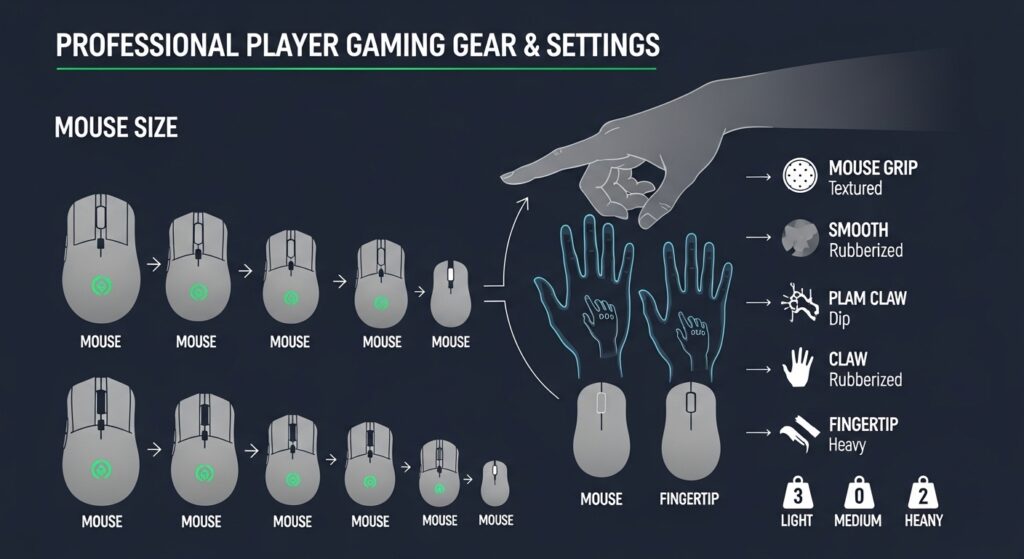
- Small hands — Shape: narrow, shorter — Grip: fingertip/claw — Weight: 45–55g — Example: small hump helps control
- Medium hands — Shape: balanced — Grip: claw/palm hybrid — Weight: 55–65g — Note: watch for flared sides
- Large hands — Shape: longer, taller hump — Grip: palm/claw — Weight: 60–70g — Note: avoid cramped minis
“Table” 4: Controller baseline (pseudo-table)
- Stick deadzone: 0.07 — Response: Linear — ADS sens: 0.8 — Scope sens: 0.7 — Trigger: hair — Notes: tune drift first
- Stick deadzone: 0.10 — Response: Dynamic — ADS sens: 1.0 — Aim assist: default — Notes: steady, less jittery
“Table” 5: Audio quick picks (pseudo-table)
- Headset: closed-back — Dynamic range: low — Surround: off — HRTF: try on — Mic: gate + suppression
- Headset: open-back — Dynamic range: medium — Surround: off — HRTF: try off — Mic: push-to-talk
A short rant on sponsors and “pro choices”
Every time you see a pro swap to a new keyboard the day their sponsor changes, remember this: they could still farm you on a toaster. That doesn’t mean gear doesn’t matter. It means most modern gear is good enough. The real gains are fit and consistency. If the mouse shape fits you and the sensor is stable, you’re set. If your monitor is fast and your FPS is capped smartly, you’re set.
My accidental “I changed DPI mid-fight” story
One of my finer moments: I was on 800 DPI for months. I moved a side button the night before LAN. Guess what that button did? Switched my DPI to 3200. I peaked a corner, did a full 360, and died to a guy who probably thought I was trying to air traffic control my crosshair. Moral: lock your DPI button or disable it in software. And yes, tape works.
How I test new settings without losing my mind
- Change one thing at a time. Only one.
- Play at least three matches or 30 minutes before judging.
- Keep a tiny notepad file with what changed. If I feel worse, revert fast.
- Don’t test during scrims that matter. Do it on a warm-up day.
Quick GPU and FPS sanity check
- In-game FPS counter: on.
- Frame cap: a few frames below refresh rate (144Hz -> 141, 240Hz -> 237).
- Spikes or stutter: check background apps, thermal throttling, and VRAM usage.
- VRR tech: off for comp, on for chill single-player. Your choice.
Do you need a $200 mouse?
No. You need a mouse that doesn’t fight your hand and a pad that doesn’t slip. Spend the saved money on a better monitor or a second set of mouse feet. Or on a pizza. Up to you. But a high refresh panel is the one thing that changed my aim the most besides practice.
Stuff people forget
- Chair height. If your elbow is floating, your wrist will hate you.
- Desk surface. Hard edges damage mouse cables and your skin. Use a mat.
- Lighting. Glare on your monitor can hide enemies. Kill the glare.
- Internet. Packet loss can make you think your aim is off. It’s not you. It’s the wires.
Want more nerdy dives?
I dump longer gear breakdowns, testing notes, and updates on my page here: my ongoing gear notes and experiments. It’s where I post the weird stuff that doesn’t fit in a single article.
My current build and baseline settings
Gear
- Mouse: lightweight wireless, 800 DPI, 1000 Hz polling, LOD around 1 mm.
- Keyboard: TKL, linear switches, dampened spacebar.
- Monitor: 240Hz 1080p, FPS cap at 237, G-Sync off in ranked.
- Headset: closed-back, mic with gate and suppression in software.
- Mousepad: large control pad, washed monthly like a normal adult.
OS and driver
- Windows pointer 6/11, acceleration off.
- Raw input on in games.
- NVIDIA Low Latency “On,” V-Sync off, triple buffering off.
In-game graphics (generic)
- Textures: Medium-High if VRAM allows.
- Shadows: Low.
- Effects/Volumetrics: Low or Off.
- Motion blur/Film grain: Off forever.
- FOV: 100–110 if allowed.
But what about streamers and pros?
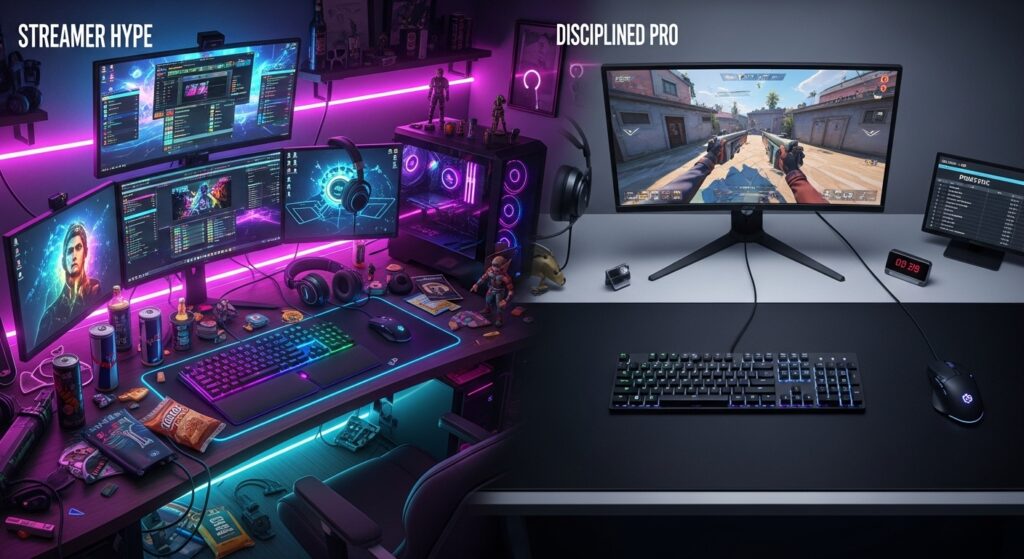
I know. You see your favorite player laser people on controller with zero recoil and you want that magic. You can learn from them. Steal ideas, yes. The thing is, their muscle memory is tuned to their exact setup and their style. A pro who plays on 400 DPI might have a giant pad and a low desk. Different world. Start with their numbers, then tune for you.
Also, half of them play 8 hours a day. That’s the real buff. Not the glass mouse feet or the RGB coils that “charge your aura.”
One last mention before I forget
If you ever wonder why your game feels smooth one day and muddy the next, check your refresh rate setting in Windows and the game. I’ve seen it reset to 60Hz after an update. I wish I was joking. The screen didn’t look bad, just slightly sleepy. Fixed it. Instantly better.
When I say “feel,” I mean it
Some of this sounds subjective because it is. Input lag, micro stutter, crosshair clarity—your brain feels it before you can explain it. The trick is to make a stable baseline for yourself. Then you’ll know when something’s off. You’ll sense it in the first round. That’s the point of all this tuning.
Anyway, if you came for a magic build that makes you top frag instantly, sorry. Not how this works. But if you stick to a steady setup, do the dull parts (DPI, polling, frame cap, no blur), your shots will start to land more. That’s been my life for years. Build the boring foundation, then the highlight plays happen by themselves.
And yes, I’ll still answer DMs about “Is 1440p okay?” Yes. If your GPU keeps 200+ FPS, enjoy the pixels. If not, 1080p is fine. Pros win titles at 1080p for a reason.
Oh, and this is me saying it a second time: don’t obsess over pro player gaming gear and settings to the point you stop actually playing. Test a bit, lock it in, and go queue. Because practice beats tinkering 9 days out of 10.
FAQs
- Q: What DPI should I use for shooters if I’m new? A: Try 800 DPI with a middle-of-the-road in-game sens. If it feels too slow, bump sens a little. If it feels jittery, lower sens. Small steps.
- Q: Is 144Hz enough, or do I need 240Hz? A: 144Hz is good. 240Hz is better if your FPS can hang. If your PC can’t keep frames high and stable, 144Hz with a good cap feels great.
- Q: Do I turn on V-Sync or G-Sync for ranked? A: I usually turn both off and set a frame cap just below refresh rate. Lowest input lag that way. For casual or single-player, G-Sync/FreeSync feels smooth.
- Q: Are linear switches actually faster? A: They’re just smoother. Speed is more about how comfy you are. If your fingers don’t fight the switch, you’re faster.
- Q: Should I copy a pro’s sensitivity exactly? A: Use it as a starting point. Then tweak. Your mousepad size, desk space, and arm style are different. Make it yours.
I think that’s enough for now. I’ll probably tweak half of this next week after another long night of testing. That’s the cycle. The one constant: don’t let the gear get in the way of the game. And yeah, pro player gaming gear and settings can help. Just not if you treat them like a magic spell.
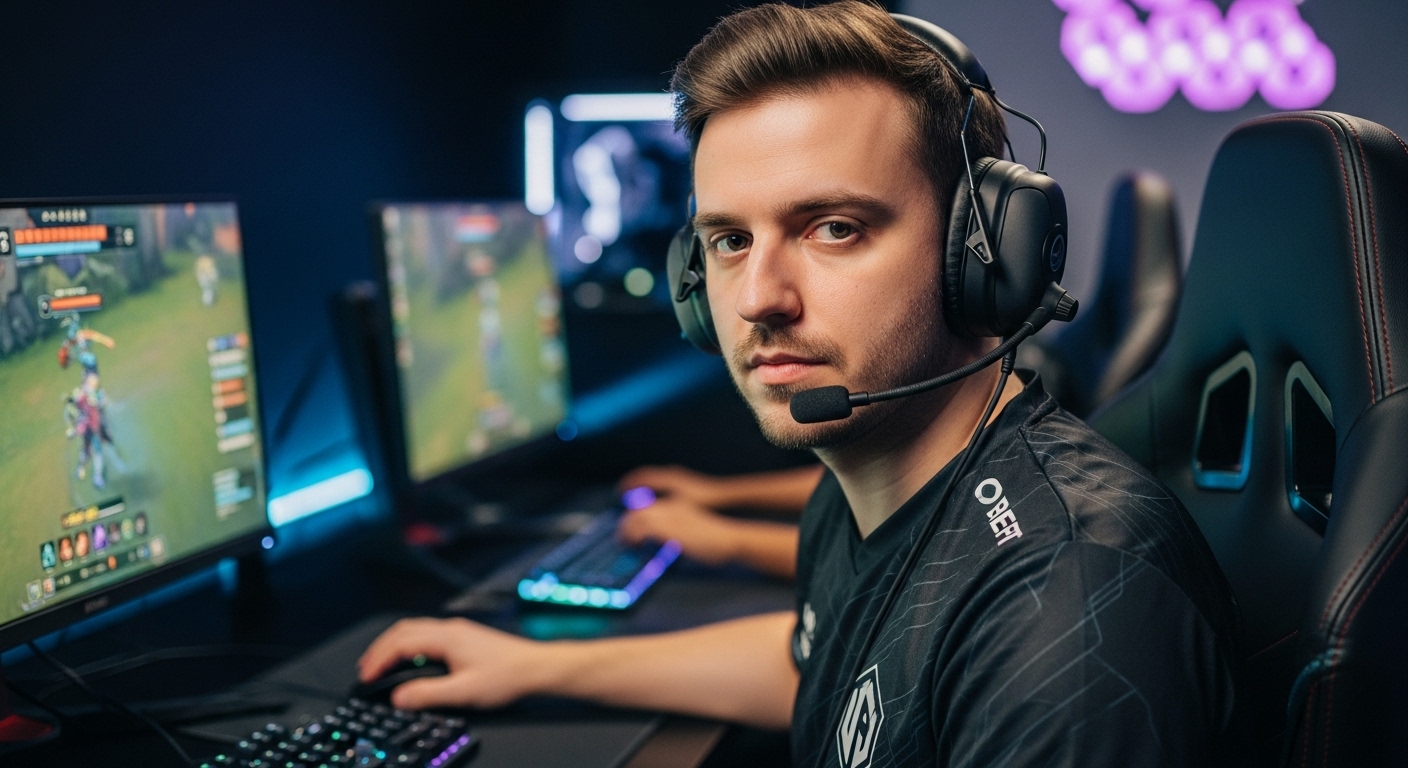
John | Your source for Esports, Battle Royale, Role-Playing, Retro Games, and Gaming Gear. Let’s Enjoy!



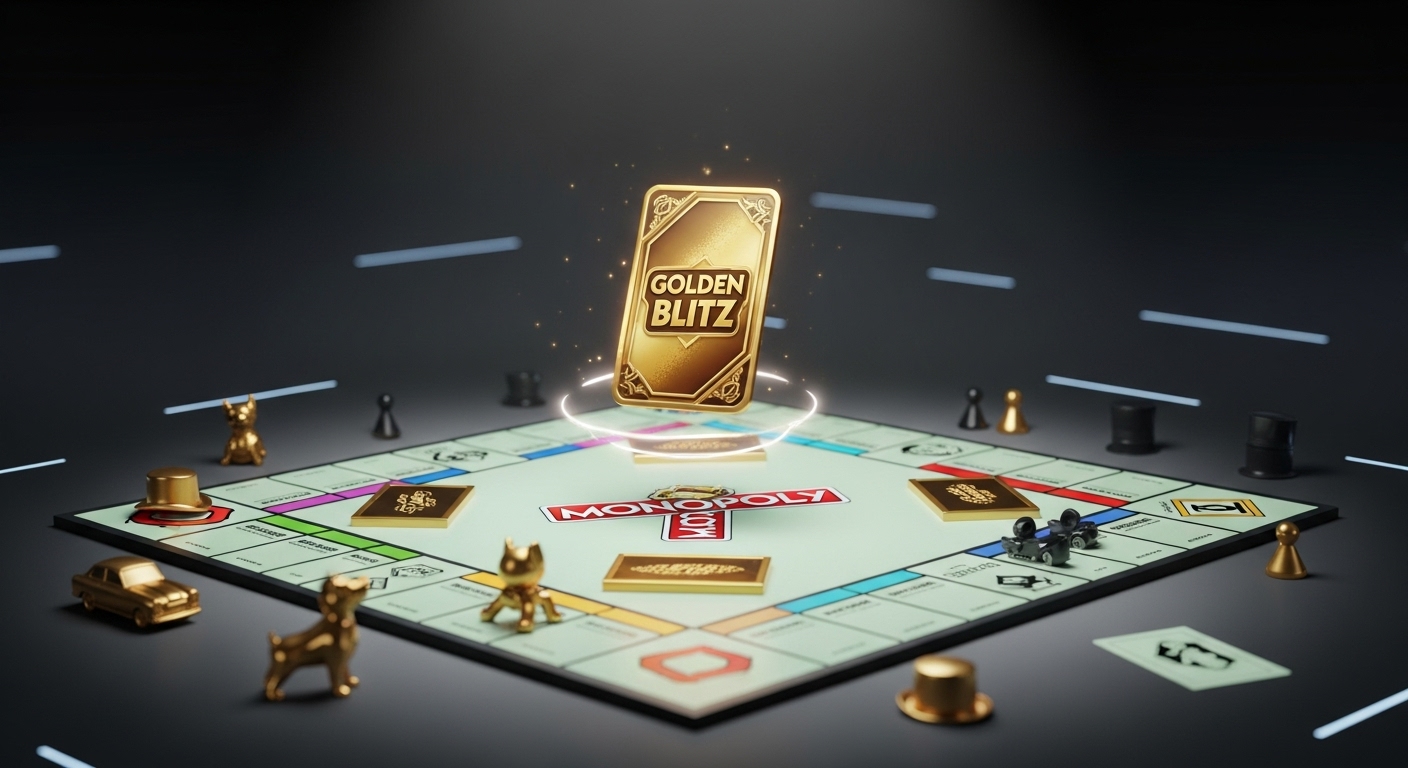
Great breakdown of pro gaming gear and settings. Consistency is key. Avoid overcomplicating your setup. Aim for minimal input lag.
Great tips on optimizing gaming gear and settings for better aim and performance. Consistency is key!
Mice, monitors, DPI, polling rate – all matter in gaming gear. Personalized setup is key for success.
I never realized how important the mouse and settings are for gaming, great advice here.
Interesting breakdown of pro gamer gear and settings. Aim for consistency over flashy effects. Sensor and shape critical.
Love how this breaks down pro gaming gear without overwhelming tech jargon. Aim for consistency, not flashy setups.
Interesting breakdown of pro gaming gear and settings. Consistency and reduced input lag are key for success. Thanks for the tips!
Great breakdown of pro gaming gear and settings. Consistency is king – avoid overcomplicating settings for better results.
Do lighter mice lead to better FPS gameplay? Can cramping affects aim accuracy, regardless of weight?